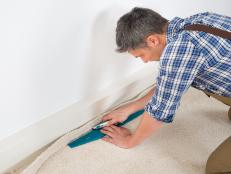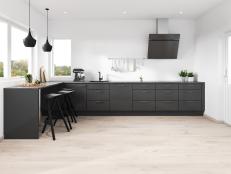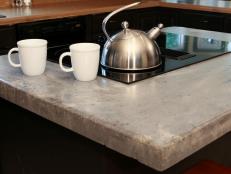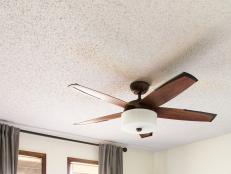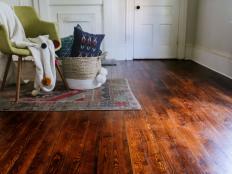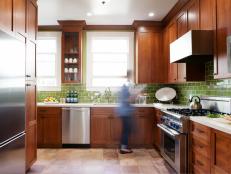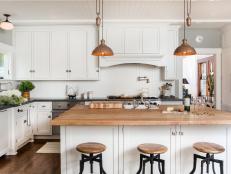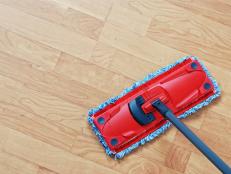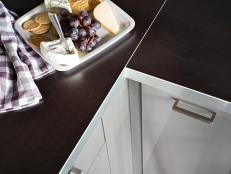Bamboo Ceilings
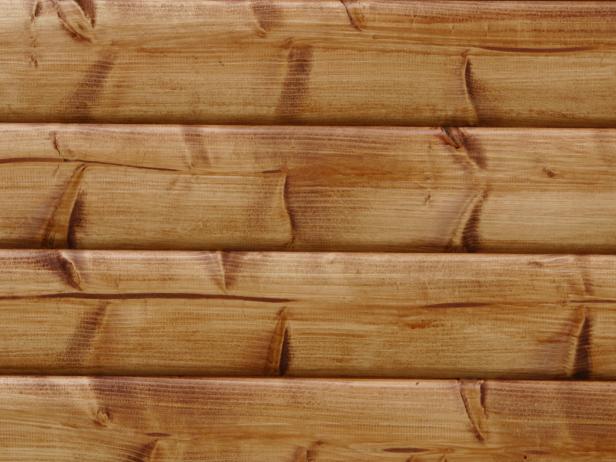
Jupiterimages
Bamboo is a tall tropical grass that grows quickly and is extremely sturdy. Used in Eastern cultures for centuries as a durable building material, it's gaining popularity in the West as a beautiful, green alternative to hardwoods for flooring and furniture and, more recently, as an alternative to drywall for ceilings. Some features of this unique material include:
- Durability. Bamboo is incredibly strong and resilient. High-quality bamboo is as hard as red oak and harder than cherry, teak and walnut. Bamboo is also naturally termite-resistant.
- Renewability. Most bamboo used for construction is grown from managed bamboo forests. Plants can be planted and harvested within four to six years.
- Health benefits. Both during manufacturing and after it's installed, bamboo planks don't release any negative byproducts or volatile organic compounds into the air. In fact, many brands can qualify for LEED credits for the bamboo planks themselves and for the sealants or paints used for finishing.
- Versatility. Bamboo is well-suited to dry and humid climates; it doesn't split or crack like some woods. Bamboo also stains well and can be used on walls and as panels in addition to being used for ceilings and floors.
- Aesthetic appeal. Among interior designers, bamboo is considered a fresh, stylish and exotic ceiling option. Some say that it has more character than standard hardwoods and that the look of drywall can't compare.
- Reasonable cost. Installed, the cost of bamboo ceilings is competitive with the cost of wood. It's more expensive than drywall, but it remains a reasonable option for many residential construction projects, especially as an accent ceiling in a highly visible room.
Bamboo ceilings look more like wood than like bamboo. Ceiling planks are manufactured from timber bamboo that's cut and milled into long strips. The strips are then dried and laminated into a single-ply veneer. Several layers are compressed together under heat to create a multilayered product that's milled into tongue-and-groove planks. The planks can be left unfinished until after installation, a common practice when the planks will be used for flooring. Planks that will be used for ceilings normally have a finish added. Various manufacturers offer different color and sheen choices; all are typically natural colors in matte, semigloss and gloss sheens.
Installation Overview
Manufacturers have specific installation information that should be followed for their products. Generally, to create a bamboo ceiling, bamboo planks are simply attached to ceiling framing in place of drywall at the same place in the construction sequence. For a week before installation, ensure that the temperature and the humidity level in the room where the ceiling will be installed remain at typical indoor living conditions (60 to 70 degrees Fahrenheit and 40 percent to 60 percent relative humidity; this will allow framing members to expand or contract and discourage nail pops. At least 72 hours before installation, store the bamboo planks in the room; this will allow the materials to adjust to the indoor temperature and humidity.
Begin installing the bamboo ceiling planks next to an outside wall. This is usually the straightest and best reference for establishing a straight line. You can cut the plank lengths as needed with conventional power tools. Lay them perpendicular to the ceiling joists for greatest stability, leaving at least a half-inch expansion space between the ceiling and the adjacent walls. Fasten planks at each intersection with the ceiling joists. For subsequent rows, stagger the end joints from row to row and use cut ends to begin and end the rows that follow.
Once the entire field has been installed, proceed with installing drywall for the walls. During the trim stage of construction, when baseboards and other finish materials are being installed, install crown molding at all bamboo ceilings to conceal the expansion gap between the ceiling and the adjacent walls.






